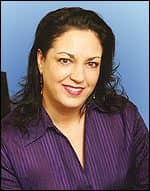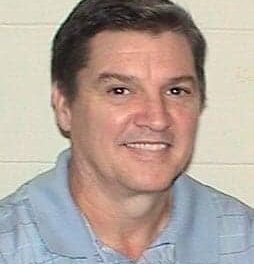Taking HTM training to the world
By Laurie Bonner
Not all superheroes wear capes, but many do have dual identities—not unlike Tobey Clark, BSBME, MSEE, CCE, CHTM, FAAMI, FACCE. His longtime “day job” is with the University of Vermont in Burlington.
“After being director of the Technical Services Partnership there for 32 years, along with a combined stint leading the instrumentation design/fabrication lab, I stepped down in 2017 and became the engineering supervisor of our clinical engineering team and student workers,” he says. “I also typically teach four courses a year in medical instrumentation and HTM at the university.” Over the course of his career, he has directed HTM assistance and services to more than 30 hospitals in Vermont, New York, and New Hampshire.
But Clark also has a second identity, which he calls his passion. He, along with colleague Mike Lane, directs the World Health Organization (WHO) Collaborating Center for Health Technology Management, which develops and conducts virtual and live education courses on health technology, HTM, and technical services all over the world, especially in developing countries.
Clark first began working with the WHO in the early 1990s. “I was involved in training international clinical engineers/HTM professionals including Adriana Velazquez, the current WHO medical device leader, through a partnership with WHO and [the American College of Clinical Engineering]to conduct Advanced Clinical Engineering Workshops (ACEWs),” he says. These are weeklong workshops in other countries to educate people in clinical engineering.
Because his children were young in the ’90s, Clark did not travel outside the United States to participate in an ACEW until 2000, when he went to one in Lithuania after his youngest was in college. “Over the past 20 years, I have been faculty on 16 additional ACEWs in 13 countries, contributed to four WHO Global Forums for Medical Devices, and worked with WHO and the Pan American Health Organization (PAHO), WHO’s office in the Western Hemisphere, on various projects including the development of two 100% online courses on medical equipment,” he says.
So far, there have been more than 50 workshops—with total participants numbering close to 5,000—held in about 30 countries, with people attending from other nations as well.
Not surprisingly, Clark says, people in the developing world face different challenges with medical technology. “First, there is less technology, thus more limited use and access; the complexity is lower; and, in many cases, the equipment is less available due to parts issues or poor repair capability,” he says. Also, access to consumable products may be limited, and a lack of trained users may lead to disuse. Finally, he adds, “the health issues are different than in the United States, and therefore the device types are a dissimilar mix.”
To help overcome some of the challenges, Clark says, the WHO Collaborating Center focuses on training:
- People responsible for planning and managing healthcare technology
- Technical staff and users about medical equipment principles, application, support, and safety
- International student interns in HTM
“We have provided three- to six-month internships for 43 interns primarily from Latin America and the Caribbean over the past 15 years,” Clark says. “The goal is to train and educate them so they can be self-sufficient in their countries.”
Other participants in the ACEWs might include a country’s national health authorities as well as university professors and heads of health technology professional societies.
Topics covered in the workshops might include HTM, computerized maintenance management systems, patient safety issues, risk management, human resources development, education, and certification as well as more advanced work in cybersecurity, medical device integration, and incident investigation. The goals have included the development of national policies—including regulation and management, to build on education programs, and to create CE/HTM departments in hospitals.
In March 2019, Clark led an ACEW for leaders from 14 Caribbean nations in Washington, D.C.His other recent work with WHO/PAHO involves providing input and editorial work for WHO publications such as Decommissioning of Medical Devices and participating in PAHO health technology assessment and regulatory meetings in the Americas. His most recent online course is Health Technology Planning & Management on the PAHO Virtual Campus, which, he says, “I developed, teach, and work with Rossana Rivas from Peru to coordinate the Spanish version.”
Education for the Future
All of this work, both at home and abroad, gives Clark a deeper perspective on the role of education and the future of HTM. One of the most significant challenges the field faces, he says, “is the shortage of HTM professionals. This is due to the limited numbers of adequately trained staff going into the field. Some of the root causes of this limited interest are the lack of visibility and value associated with the field, inadequate standardization of metrics to show value and benchmarks, and certification not being accepted not only by employers but even some in the HTM field.”
His take? “Employers do not set competitive salaries for HTM professionals.” Increasing acceptance of certification, Clark says, is an important step toward creating more respect, and drawing more people into, the field.
“CBET, CHTM, and CCE certification is a measure of competence and adds to the credibility of the person, organization, and field,” says Clark. “I think if the number of certified individuals were to expand, it would become the de factostandard and accepted and valued by employers. In some countries, certification is required to work in the field.”
Another challenge facing HTM organizations, Clark says, is the FDA review of non-manufacturer service of medical devices: “HTM groups, especially third parties, need to consider putting in the effort to meet industry-standard certifications such as ISO 9001 or ISO 13485.”
Changes in technology related to device integration are also the future of HTM. “These are driving many needs for change in the HTM field, such as involvement in cybersecurity.”
To meet all these challenges, says Clark, “new options for HTM education need to be developed.” For example, alternative education options may be appealing to people who might want to consider HTM as a mid-career change without having to go back to a traditional college program.
“One option to consider is certificate courses focusing on the specifics of HTM for careerchangers, that is, older professionals,” he says. “At the University of Vermont, we have a course sequence primarily designed for career-changers. It consists of three online courses—basic and advanced medical equipment, along with management—and a hands-on course at our teaching hospital to provide this necessary component. And we have a number of career-changers on our staff who have taken these courses and done well in this field.”
Nontraditional training pathways can benefit others, too. “Another option would be BMET apprentice programs involving on-the-job training with online or classroom education to develop those out of high school who are not interested in going to college,” Clark says.
“Lastly, and very importantly,” he adds, “we need to expand education at the graduate level for clinical engineers and health technology managers who will become leaders of the HTM field.”
Clark also predicts that developing technologies will continue to change the way education is delivered in the decades to come. At the University of Vermont, he says, “if funding is available, we hope to use some advanced technologies, such as augmented and virtual reality in the future, to add value to the online courses, especially for international students and others outside our region. This aids in learning hands-on skills.”
Developing technologies can help to enhance education in other countries as well. “In the developing world where Internet services are limited, cellular networks are prevalent, and nearly everyone has one or more smartphones,” Clark says. “We hope to use this tool for education for example via YouTube videos, flash card quizzes, and other mobile learning tools.”
Looking Forward
Over the next few years, Clark will continue helping to expand the educational opportunities through the WHO. “The workplan which I submitted to WHO to become a Collaborating Center must be completed by August 2021,” he says.
“Much has already been accomplished, but now we need to translate and adapt the online courses and materials to Portuguese for use in Brazil, hold HTM workshops in Latin America and the Caribbean, support WHO and PAHO health technology leaders, and complete additional publications. The next workshop will be in Trinidad and Tobago in 2020 and plans are underway for the course for Brazil.”
Meanwhile, he also hopes to find time to spend at home. “I’ve got six awesome grandchildren all living within 10 miles from me along with my kids and their spouses,” he says. “I want to spend as much time with them as I can—they are such a joy. In the future, I’m also looking forward to traveling with my wife, enjoying some music, and relaxing.…” Suffice it to say that such relaxation is much deserved.
Laurie Bonner is associate editor of 24×7 Magazine. Questions and comments can be directed to [email protected].






Tobey Clark has long been one of my heroes. He has always worked hard to advance clinical engineering and HTM. A true leader.
Tobey is one of the people I admire the most in the HTM field. I’m constantly asking myself “where does get get the time to do all he does?”
Well deserved recognition of a long time leader, where leadership is defined by serving.
Fabulous, what a website it is! This weblog provides useful data to us,
keep it up.
It’s an honor to be friend of this great man
He is a great man. More than an engineer, he is a huge human being